Cycling Levels

Are there any events or clubs that organize group cycling trips on specific routes ?
There are many events and clubs that organize group cycling trips on specific routes, providing opportunities for cyclists to explore new places, meet other riders, and enjoy shared experiences. Examples include the Gran Fondo World Championships, Tour de Cure, RAAM, local cycling clubs, bike shops, and online communities like Strava, Facebook, and Meetup. These organizations offer a range of rides and races, from beginner to advanced levels, and cater to different interests such as road biking, mountain biking, and fundraising.
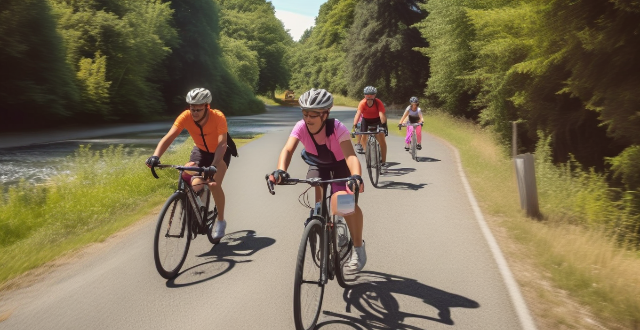
How do I find cycling routes that avoid traffic ?
Cycling is a great way to exercise and explore, but sharing the road with vehicles can be dangerous. To ensure a safe ride, it's important to find cycling routes that avoid traffic. Some tips include using online mapping tools like Google Maps or Strava, checking with local cycling groups, looking for dedicated bike infrastructure, and planning your route ahead of time. By following these steps, you can enjoy a safe and enjoyable ride without worrying about traffic.

Where can I find a map of local cycling routes ?
Cycling is an excellent way to explore your local area, stay fit, and enjoy the outdoors. If you're looking for maps of cycling routes near you, here are some resources that can help: City or Local Government Websites Cycling Clubs or Groups Online Cycling Communities Local Bike Shops Tourism Information Centers Smartphone Apps Google Maps Social Media Library or Bookstore Outdoor Recreational Maps Word of Mouth Remember to always check the condition of the route before heading out, as well as the weather forecast and any potential hazards along the way. Happy cycling!

What safety precautions should I take when cycling on urban routes ?
Cycling in urban areas can be a fun and efficient way to get around, but it's important to prioritize safety. Here are some key precautions to take when cycling on urban routes: 1. Wear a Helmet 2. Use Proper Lighting 3. Follow Traffic Laws 4. Be Predictable 5. Stay Alert 6. Choose the Right Route 7. Wear Reflective Clothing 8. Keep Your Bike Maintained
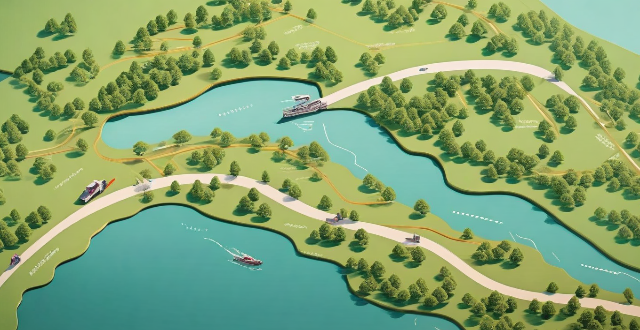
How do I plan a cross-country cycling route ?
Planning a cross-country cycling route involves determining the starting and ending points, choosing a suitable route, planning daily mileage, booking accommodations/campsites, and packing necessary gear. Factors to consider include distance, terrain, weather conditions, safety concerns, travel restrictions, fitness level, budget, and preferences. Tools like Google Maps, Bikely, or Komoot can help customize the route based on distance, elevation gain, and surface type. Aim for 50-70 miles per day if experienced or 30-40 miles if new to long-distance cycling. Pack spare tubes, pump, multi-tool, first aid kit, food, water, and appropriate clothing for expected weather conditions.

How can I discover new cycling routes in my area ?
Finding new cycling routes can be an exciting adventure. Here are several ways to discover new cycling routes in your area: 1. Use cycling apps and websites like Strava, Komoot, Ride with GPS, and Bikemap. 2. Join local cycling groups through Meetup, cycling clubs, or Facebook groups. 3. Check with local bike shops for route recommendations and group rides. 4. Look at city or county parks departments for maps and events showcasing new routes. 5. Ask friends and family for hidden gem routes and join their rides. 6. Explore on your own by scouting detours on familiar rides and using maps. 7. Attend cycling events like road races and bike festivals to learn about new routes. 8. Use Google Maps to plan custom routes and spot potential paths in satellite view. 9. Check out local guidebooks on cycling in your region at bookstores or the library. 10. Visit local tourist information centers for brochures and advice on scenic routes. By utilizing these methods, you can expand your cycling horizons and enjoy the thrill of discovering new routes in your area while riding safely and respecting the rules of the road and trail.

Can ecological protection areas help mitigate the impacts of climate change ?
Ecological protection areas can mitigate climate change impacts by carbon sequestration, habitat preservation, water conservation, soil erosion control, and nutrient cycling. These areas safeguard biodiversity, protect natural resources, and preserve ecosystem functions. They help reduce atmospheric CO2 levels, provide refuge for species adapting to changing environmental conditions, maintain stable water levels, filter pollutants from water sources, control soil erosion, and promote nutrient cycling processes. Supporting and expanding ecological protection areas is crucial for a sustainable future.
![What are the best cycling routes in [city/region] ?](/imgs/2f8b31ee-f62a-46e3-8828-37a4af062f9b.png)
What are the best cycling routes in [city/region] ?
Cycling is a great way to explore the beautiful landscapes and attractions of [city/region]. Here are some of the best cycling routes that you can take: 1. Coastal Route: Start at [location] and end at [location]. Distance: [distance]. Difficulty level: [level]. Scenic spots: [spots]. 2. Countryside Route: Start at [location] and end at [location]. Distance: [distance]. Difficulty level: [level]. Scenic spots: [spots]. 3. Mountainous Route: Start at [location] and end at [location]. Distance: [distance]. Difficulty level: [level]. Scenic spots: [spots]. 4. Urban Route: Start at [location] and end at [location]. Distance: [distance]. Difficulty level: [level]. Scenic spots: [spots]. Remember to bring essential items such as water, snacks, a map, and a first aid kit. Wear appropriate clothing and gear, and always follow traffic rules and regulations.

What kind of cycling gear do I need for road biking ?
Road biking requires specific gear for safety, comfort, and efficiency. Essential items include a well-fitted helmet and road bike, moisture-wicking clothing, protective accessories like sunglasses and gloves, hydration options, tools for repairs, first aid supplies, safety items such as reflective gear and lights, performance enhancers including clipless pedals and cycling computers, storage solutions for longer rides or tours, and maintenance tools to keep the bike in top condition.

Can family members of different ages and fitness levels do the same home workout ?
The question of whether family members of different ages and fitness levels can engage in the same home workout is a pertinent one, especially considering the numerous health benefits associated with regular exercise. The positive effects of physical activity on longevity and disease prevention are well-documented At the core of this inquiry lies the understanding that exercise, regardless of its form, be it running or weight lifting, significantly contributes to a longer and healthier life. Given the myriad benefits of regular physical activity, families are often inclined to incorporate workout routines into their daily lives. However, the variance in age and fitness levels among family members presents certain challenges and considerations:

What are some must-ride long-distance cycling paths ?
Long-distance cycling paths offer a unique way to explore the world's diverse landscapes and cultures. From coastal drives to mountainous trails, these routes cater to various preferences and skill levels. By embarking on these must-ride paths, cyclists can immerse themselves in breathtaking scenery, cultural experiences, and personal challenges that will leave lasting memories.

Can regular physical activity reduce anxiety levels ?
Regular physical activity can help reduce anxiety levels by improving mood, reducing stress hormones, promoting better sleep, increasing self-esteem and confidence, and providing social support. Engaging in at least 30 minutes of moderate-intensity exercise per day can significantly reduce anxiety symptoms.
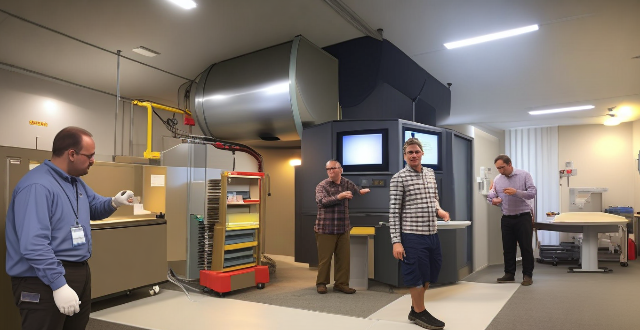
Can you explain the difference between biosafety levels 1-4 ?
Biosafety Levels (BSL) are guidelines for handling hazardous biological agents, with four levels of increasing risk and safety measures. BSL-1 is for non-pathogenic organisms, BSL-2 for moderate risk agents, BSL-3 for serious disease-causing agents, and BSL-4 for highly dangerous agents like Ebola. Differences include lab design, access control, safety equipment, and procedures to protect personnel and the environment.
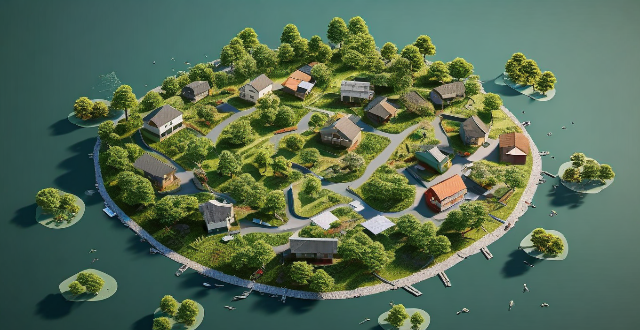
How does the greenhouse effect impact ocean levels ?
The greenhouse effect, essential for Earth's habitThe greenhouse effect, essential for Earth's habittensified by human activities like has been intensified by human activities like burning fossil fuels and deforestation. This amplified effect is causing global warming, which leads to rising ocean levels through melting polar ice caps and thermal expansion of seawater. Changes in precipitation patterns also indirectly affect ocean levels by redistributing water. Addressing the causes of the enhanced greenhouse effect is vital to mitigate these impacts and protect the planet's future.

Are there any apps that suggest cycling routes based on my fitness level ?
The text discusses the topic of cycling apps that suggest routes based on fitness level. It introduces the concept and then lists five top apps for this purpose: Strava, MapMyRide, Komoot, Cyclemeter, and Ride with GPS. Each app is briefly described in terms of its features and how it suggests suitable routes. The conclusion summarizes the benefits of these apps for cyclists of all levels.

Does strength training have an impact on stress levels ?
Strength training can have a positive impact on stress levels through both physical and psychological benefits. It increases endorphin release, improves sleep quality, enhances self-esteem, provides distraction from stressors, fosters a sense of accomplishment, and promotes mindfulness. Consult with a healthcare professional before starting any new exercise regimen.

What role does government regulation play in ensuring safe levels of radiation exposure for the public ?
Government regulation is essential for ensuring safe radiation exposure levels by setting standards, licensing facilities, conducting inspections, educating the public, investing in research, preparing for emergencies, and collaborating internationally to manage radiation risks effectively.

How do sports competitions influence stress levels and mental readiness ?
Sports competitions can significantly impact stress levels and mental readiness. Performance pressure, fear of failure, winning obsession, and physical exertion can increase stress levels, while confidence building, goal achievement, camaraderie, and mindfulness practices can decrease them. Similarly, focus and concentration, resilience, mental toughness, and visualization techniques can improve mental readiness, while overthinking, perfectionism, lack of self-belief, and external factors can impair it. Overall, sports competitions provide opportunities for growth, learning, and personal development but also present challenges that require effective coping strategies to manage stress levels and maintain mental readiness.

What are some successful examples of public health campaigns focused on increasing physical activity levels ?
Over the last decade, public health campaigns aimed at increasing physical activity levels have emerged as a crucial strategy in the global fight against sedentary lifestyles and their associated health risks. These campaigns, often initiated by governments, non-profit organizations, or private entities, employ a variety of tactics to encourage individuals to adopt more active lifestyles. Here are some of the most successful public health campaigns that have made significant strides in promoting physical activity: 1. **Let's Move!** - Launched by Michelle Obama in 2010, this initiative aims to solve the problem of childhood obesity within a generation by encouraging daily physical activity and healthy eating habits. The campaign has successfully raised awareness about childhood obesity and inspired many communities to take action. 2. **Active Healthy Kids Canada Report Card** - This annual report card provides a comprehensive overview of physical activity levels among Canadian children and youth. By collecting and analyzing data on physical activity levels, sedentary behavior, and fitness levels, the report card has increased awareness about the importance of physical activity and provided evidence-based recommendations for policymakers and practitioners. 3. **10,000 Steps Rockhampton** - A community-wide program in Rockhampton, Queensland, Australia, this initiative aims to increase physical activity levels among residents by promoting walking as a simple and effective form of exercise. Through various initiatives such as Walk to School programs, workplace challenges, and community events, the program has led to significant increases in walking rates among participants, resulting in improvements in overall health and well-being. 4. **Vermont's Physical Activity Guidelines for Americans Campaign** - This state-wide campaign in Vermont, United States, promotes the adoption of the Physical Activity Guidelines for Americans among Vermonters. Through educational campaigns, partnerships with local organizations, and community events focusing on the benefits of regular physical activity, the campaign has improved understanding and adherence to the guidelines, contributing to higher levels of physical activity among Vermonters. 5. **Copenhagen's Cycling Strategy** - A city-wide initiative in Copenhagen, Denmark, this campaign aims to make cycling a safe, attractive, and convenient mode of transportation for all residents. By expanding bike lanes, improving cycling infrastructure, and promoting cycling culture through events and education, Copenhagen has become one of the most bicycle-friendly cities in the world, with over 62% of residents commuting by bike daily. This has led to significant improvements in air quality, traffic congestion, and public health. These campaigns demonstrate the power of targeted, creative approaches in fostering a culture of physical activity and improving public health outcomes. By leveraging the strengths of their respective communities and focusing on sustainable, long-term changes, these initiatives serve as models for future efforts to combat sedentary lifestyles and promote active living.

What are the impacts of climate change on sea levels ?
Climate change is causing sea levels to rise, which can have devastating consequences on coastal communities and ecosystems. The melting of ice sheets in Greenland and Antarctica, thermal expansion, loss of coastal wetlands, and increased erosion and flooding are all impacts of climate change on sea levels. It is essential to take action to mitigate the effects of climate change and protect our planet's ecosystems and communities from further harm.

How has global warming impacted sea levels around the world ?
Global warming, primarily caused by greenhouse gas emissions from human activities, has significantly impacted sea levels. This includes melting glaciers and ice sheets, thermal expansion of ocean waters, coastal erosion, saltwater intrusion, increased flooding and storm surge risks, and displacement of coastal communities. Addressing these issues requires both mitigation efforts to reduce emissions and adaptation strategies to cope with the changes already underway.

How does exercise influence cortisol levels, which are associated with stress ?
Exercise has a complex relationship with cortisol levels and stress management. Acute exercise can cause a temporary increase in cortisol levels, while chronic exercise can help regulate them over time. By managing stress through regular physical activity, individuals can maintain healthy cortisol levels and improve their overall well-being. Chronic stress and persistently high cortisol levels can contribute to a range of health problems, including weight gain, high blood pressure, impaired immune function, decreased bone density, increased risk of heart disease and stroke, and mood disorders such as anxiety and depression. Regular exercise can help manage stress and maintain healthy cortisol levels by improving mood and mental health, better sleep quality, and increased resilience to stress.

How does exercising regularly impact stress levels and overall mood ?
This text discusses the impact of regular exercise on stress levels and overall mood. It highlights how physical activity can help reduce stress by releasing endorphins, regulating cortisol levels, improving self-esteem, and providing distraction from worries. Additionally, it explains how exercise enhances mood through immediate effects like increased energy and a feeling of achievement, as well as long-term outcomes such as better sleep and social interaction. The text concludes that regular exercise has a profound impact on mental well-being, promoting both looking good and feeling good.

How has climate change affected polar ice caps and sea levels ?
The polar ice caps are melting due to global warming, causing sea levels to rise and threatening coastal communities and ecosystems. The Greenland and Antarctic ice sheets are losing mass at an accelerating rate, contributing significantly to rising sea levels. This has significant implications for both the environment and human societies around the world. Rising sea levels pose serious threats such as coastal erosion, saltwater intrusion, loss of wetlands and mangrove forests, and displacement of coastal communities. To mitigate these impacts, urgent action must be taken to reduce greenhouse gas emissions and transition to cleaner energy sources.

Can exercise physiology help in managing stress and anxiety levels ?
Exercise physiology plays a significant role in managing stress and anxiety levels by promoting various physiological responses that counteract the negative effects of these conditions on the body. By incorporating regular physical activity into your lifestyle, you can improve your overall mental well-being and reduce the impact of stress and anxiety on your daily life.

How do office layouts influence employee physical health and activity levels ?
This article explores the influence of office layouts on employee physical health and activity levels, discussing the benefits and drawbacks of open versus closed office designs, the importance of ergonomics in workstation design, and strategies for encouraging movement within the workplace. By considering these factors, employers can create environments that promote productivity while prioritizing employee well-being.

How does wearing a face mask affect oxygen levels in the body ?
Wearing a face mask is an essential practice during the COVID-19 pandemic to prevent the spread of the virus. However, some people have concerns about whether wearing a mask affects oxygen levels in the body. In this article, we will explore how wearing a face mask affects oxygen levels in the body and provide evidence to support our claims. There are two main ways in which wearing a face mask can affect oxygen levels: decreased airflow and increased carbon dioxide retention. However, studies have shown that wearing a face mask does not significantly reduce oxygen levels in healthy individuals who are not exercising heavily. In healthy individuals, wearing a face mask does not pose any significant risk of low oxygen levels. However, if someone has underlying respiratory conditions such as asthma or COPD, they may experience shortness of breath or other symptoms when wearing a face mask. To ensure adequate oxygen levels while wearing a face mask, one can follow these tips: choose the right type of mask, maintain good hydration, exercise regularly, avoid heavy exercise, and consult with healthcare professionals if necessary.
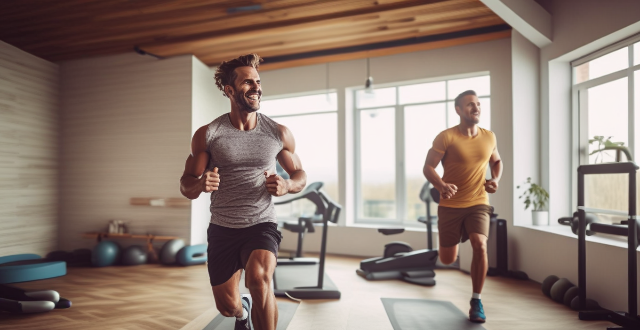
Are there specific workout routines designed for emotional stability ?
Emotional stability is an important aspect of overall well-being, and exercise can play a significant role in achieving it. Cardiovascular exercises like running, cycling, swimming, and dancing increase heart rate and blood flow, reducing stress and anxiety levels while releasing endorphins that improve mood. Strength training such as weightlifting or resistance band exercises build muscle strength and endurance, improving self-esteem and confidence while reducing symptoms of anxiety and depression by promoting the growth of new brain cells and increasing neurotransmitter levels. Yoga and meditation practices focus on mindfulness, breathing techniques, and relaxation, reducing stress levels and improving cognitive function, memory, and attention span. Incorporating these activities into your fitness routine can have a positive impact on your emotional stability and overall well-being.
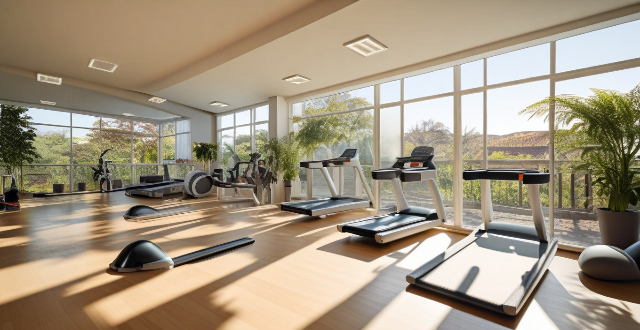
How does exercise physiology explain the differences in fitness levels among individuals with different genetic backgrounds ?
Exercise physiology explores the interaction between genetic factors and environmental influences like exercise, nutrition, and sleep to explain variations in fitness levels among individuals. It examines how muscle fiber composition, cardiovascular efficiency, metabolic rate, and body composition affect one's ability to perform physical activities. While genetic background sets a baseline for fitness potential, lifestyle choices significantly impact an individual's actual fitness outcomes. By understanding these principles, individuals can optimize their fitness through targeted exercise training, proper nutrition, and adequate rest.
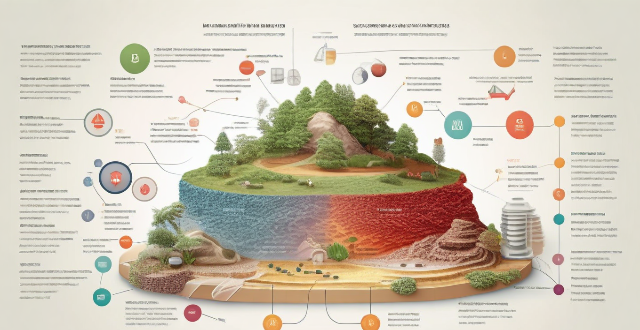
How long will it take for carbon sequestration to have a noticeable effect on atmospheric CO2 levels ?
Carbon sequestration is a process that aims to reduce atmospheric CO2 levels by capturing and storing carbon dioxide. The effectiveness of this process depends on various factors such as the rate of carbon sequestration, global emissions reduction efforts, and the health of natural carbon sinks. In the short term, it is unlikely that carbon sequestration alone will have a noticeable effect on atmospheric CO2 levels. However, in the medium to long term, if significant investments are made in scaling up carbon sequestration technologies and reducing global CO2 emissions, some noticeable effects may begin to emerge. These could include slower rates of CO2 accumulation, improved air quality, reduced global warming, and restoration of natural ecosystems. Therefore, sustained investments in carbon sequestration and other climate mitigation strategies can help achieve long-term reductions in atmospheric CO2 levels and mitigate the effects of climate change.